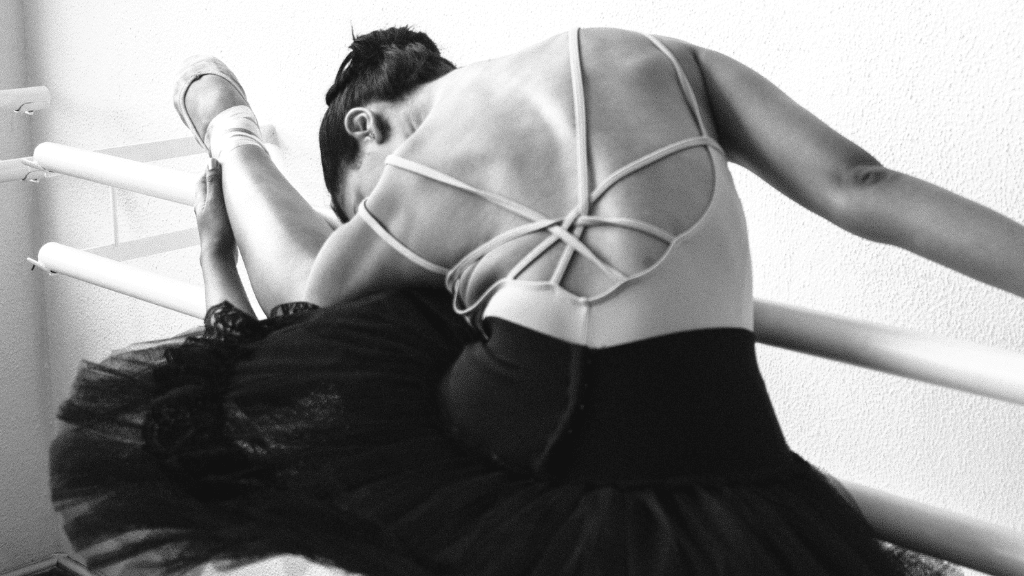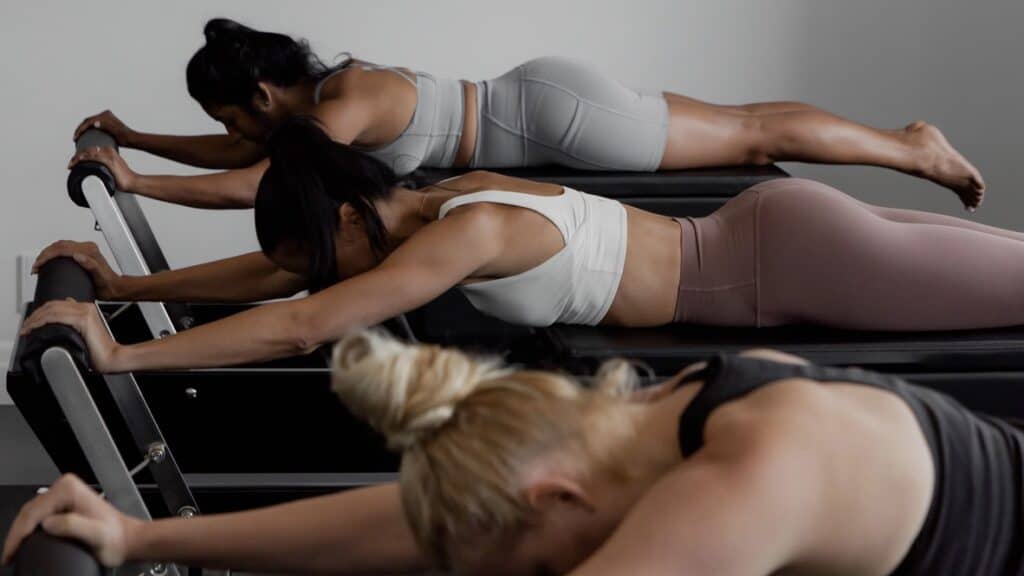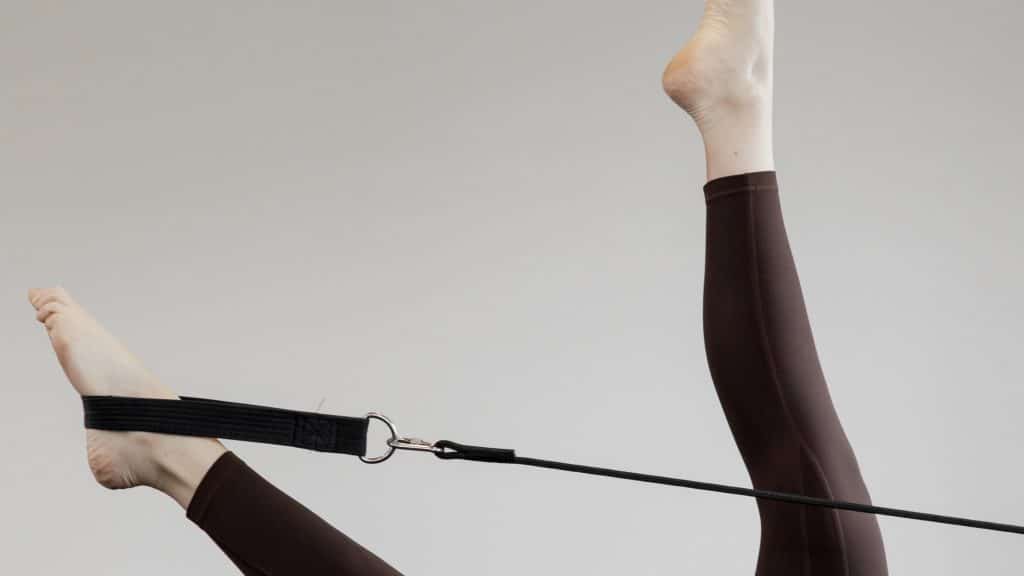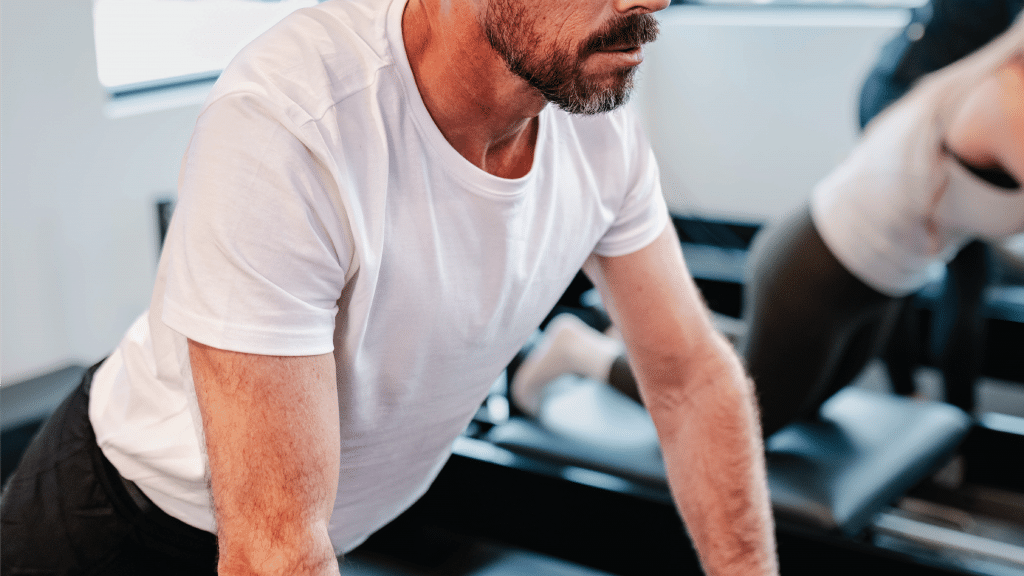Ohhhhh stretching, that glorious feeling of sinking into a stretch post-workout is so delightful … especially on glute day!
However, often we neglect to properly stretch to save time in our busy day. I’ll get to it next time, you think. Hands up if you’re guilty of that one!
What are we are doing when we stretch?
The act of stretching is just what it sounds like, pulling a muscle from both ends (origin and insertion point) to release tension and tightness.
When we get a tight muscle, the perfect harmony of movement that is shared between muscles and joints is thrown out of balance, as those tight muscles can pull the joint too much in one direction. Therefore, we are out of alignment. Not so good.
One cause of muscle tightness can be the result of our compromised posture over a prolonged period, such as slouching while sitting at your desk or bent over your phone for long periods.
It can also be the result of muscle scarring (tissue damage).
A muscle tight in one place can snowball quickly into a whole slew of problems throughout the body. Recently, I had a tight left glute which led to referred pain down my shin, and some sporadic sciatic nerve pain, culminating in some lower back pain. Phew! Now if only I had taken some time to stretch those glutes, I could have saved myself SO much trouble and discomfort!
Types of stretching (yes, there are different types)
There are several types of stretching methods recognised in the scientific literature, here are three:
- Static stretching, which is probably the first one that comes to mind when you hear the word ‘stretch’. This method involves holding a pose for about 15 to 30 seconds to the point that a muscle stretch is achieved. Static stretching is particularly helpful after exercise to increase circulation around the tired muscles and release any built-up tension. Studio Pilates clients will be familiar with static stretching, where your instructor will cue a static stretch for the major muscle group worked that day – such as a glute stretch at the footbar, held for approximately 30 seconds on each side.
- Dynamic stretching, or active stretching, is about moving the muscle through its full range of movement. An example of this would be doing big arm circles to warm up the shoulder. You will have seen athletes undertaking this type of stretching before a game, to flood the muscles with blood and oxygen, warm their body temperature, make the muscles more pliable and elastic, and improve range of motion (ROM), coordination and power.
- Proprioceptive neuromuscular facilitation (PNF) stretching, is a combination of contracting and stretching a muscle. This type of stretching is often referred to “contract-relax”, as it requires the muscle to be contracted to between 75% to 100% of maximal contraction, then held for 10 seconds, before relaxing it and then moving deeper into the stretch position. Resistance can be applied with the use of an elastic band, strap, or that magic circle we love so much at Studio Pilates!
An example of Contract-Relax is a hamstring stretch, using a band or circle. First place the hamstring into a stretch, contract the hamstring without moving for 10 seconds before relaxing the hamstring into the stretch on an exhale and moving deeper into the stretch.
How long should I be stretching (and what kind of stretching)?
There are a few schools of thought on this one.
Major bodies of research shows static stretching of muscles should precede the active workout at least 2 to 4 times per week, with each stretch being held for at least 30 seconds to improve ROM and flexibility. Recently, researchers have identified that stretching longer than 45 seconds pre-exercise can decrease strength, power, and speed.
Some researchers have found a greater benefit to static stretching when it was sandwiched between a brief warm-up and the active workout. It is during the warm-up period that the body temperature will rise, and blood will flow to the muscles faster, increasing their preparedness for the upcoming activity/workout.
Still others believe a dynamic stretching session, using a “normal” range of motion, akin to a light warm-up, better serves the body for the activities it is about to engage in. The static stretches, they propose, are better left for post-workout.
What they do all tend to agree on is that there was no added benefit to stretching multiple times per day, so once per day will achieve the goal.
Interestingly, age and gender play a role in the recommended type of stretching:
Men and older adults UNDER 65 benefit more from contract-relax stretching (PNF)
Females and older adults OVER 65 get a greater benefit from static stretching
What should I target when stretching?
Key areas to focus on stretching will always be dependent on how you feel in your own body – what areas are feeling tight and what muscle groups you are will work, or have just worked. The Studio Pilates instructors cue a relevant stretch prior to class that targets a muscle group that is going to be worked that day.
I know I have tight glutes, hamstrings, and hip flexors, so I try to focus on stretching those muscles as often as I can – especially prior to working out.
To keep it simple, you can focus on stretching muscles around the major joints in the body:
Hips are a big one to keep stretched out, which you can do with:
- Glute Stretch
- Hip Flexor Stretch
- Hamstring Stretch
- Quad Stretch
Upper body we can look after with:
- Chest Stretch (Pec muscles)
- Triceps Stretch
- Shoulder Stretch
- Neck Stretch
- Bicep Stretch
Studio Pilates studios have a great range of Stretch Cards, outlining how to perform many of the stretches- just ask your instructor.
The Bottom Line for stretching
The obvious benefits of stretching are increased ROM and flexibility, but we can also get the bonus of increased circulation, improvement in posture and alignment, potential reduction in aches and pains, stress relief, and just a quiet moment to yourself.
In the rush of our busy lives, at the very least we should aim to choose one stretch pose to hold for 30 seconds each day. That is ONE MINUTE out of our day if we’re talking arms or legs.
Using a stopwatch or clock will ensure you commit to the whole 30 seconds.
But if you’re blessed with heaps of free time, a dedicated stretch or yoga class is a great way to a way to achieve both deep stretching and some quiet time.
Happy stretching!
About the Author

Danielle Schultz has a PhD in Nutrition from Iowa State University. She has worked as an animal nutritionist for 3.5 years throughout rural Australia and loves sharing her knowledge of nutrition! She is currently on sabbatical while her husband finishes his medical training and she has been a Studio Pilates instructor since July 2018.
References:
Anthony, K.D. and Blazevich, A.J. 2012. Effect of acute static stretch on maximal muscle performance: a systematic review. Medicine & Science in Sports & Exercise. 44(1)154-164.
Bandy, W.D. and Irion, J.M. 1994. The effect of time on static stretch on the flexibility of the hamstring muscles. Physical Therapy. 74(9):845-852.
Bandy, W.D., Irion, J.M, and Biggler, M. 1997. The effect of time and frequency of static stretching on flexibility of the hamstring muscles. Physical Therapy. 77(10):1090-1096.
Boguszewski, D., Radomska, A., Kerbaum-Visser, K., Bialoszewski, D. 2018. The influence of static and progressive stretching exercises on the functional limitations of the musculoskeletal system. Trends in Sports Sciences. 1(25):13-19.
Erkut, O., Gelen, E., Sunar, C. 2017. Acute effects of different warm-up methods on dynamic balance. International Journal of Sports Science. 7(3):99-104.
Feland, J.B., Myrer, J.W., Schulthies, S.S., Fellingham, G.W., Measom, G.W. 2001. Physical Therapy. 81(5):1110-1117.
Page, P. 2012. Current concepts in muscle stretching for exercise and rehabilitation. International Journal of Sports Physical Therapy. 7(1):109-119.
Su, H., Chang, N.J., Wu, W.L, Guo., L.Y., Chu, I.H. 2016. Acute effects of foam rolling, static stretching, and dynamic stretching during warm-ups on muscular flexibility and strength in young adults. Journal of Sports Rehabilitation. 1-24.




